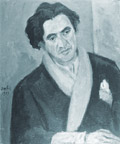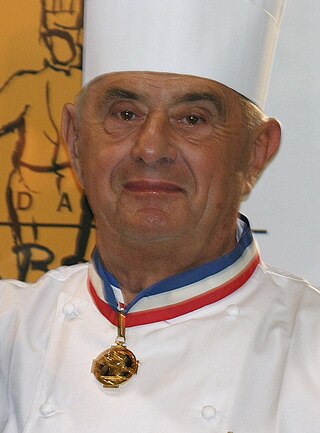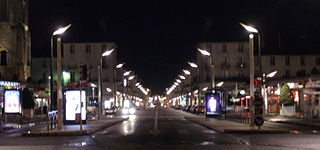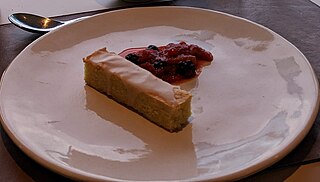Related Research Articles
Dinner usually refers to what is in many Western cultures the biggest and most formal meal of the day. Historically, the largest meal used to be eaten around midday, and called dinner. Especially among the elite, it gradually migrated to later in the day over the 16th to 19th centuries. The word has different meanings depending on culture, and may mean a meal of any size eaten at any time of day. In particular, it is still sometimes used for a meal at noon or in the early afternoon on special occasions, such as a Christmas dinner. In hot climates, the main meal is more likely to be eaten in the evening, after the temperature has fallen.
A journeyman is a worker, skilled in a given building trade or craft, who has successfully completed an official apprenticeship qualification. Journeymen are considered competent and authorized to work in that field as a fully qualified employee. They earn their license by education, supervised experience and examination. Although journeymen have completed a trade certificate and are allowed to work as employees, they may not yet work as self-employed master craftsmen.

Le Devoir is a French-language newspaper published in Montreal and distributed in Quebec and throughout Canada. It was founded by journalist and politician Henri Bourassa in 1910.
The Le Chapelier Law was a piece of legislation passed by the National Assembly during the first phase of the French Revolution, banning guilds as the early version of trade unions, as well as compagnonnage and the right to strike, and proclaiming free enterprise as the norm. It was advocated and drafted by Isaac René Guy le Chapelier. Its promulgation enraged the sans-culottes, who called for an end to the National Constituent Assembly, which nonetheless continued through the second phase of the Revolution. The law was annulled on 25 May 1864, through the loi Ollivier, which reinstated the right to associate and the right to strike.

Louis Guilloux was a Breton writer born in Saint-Brieuc, Brittany, where he lived throughout his life. He is known for his Social Realist novels describing working-class life and political struggles in the mid-twentieth century. His best-known book is Le Sang noir, which has been described as a "prefiguration of Sartre's La Nausée."

Meilleur Ouvrier de France is a competition for craftsmen held in France every four years. The winning candidates receive a medal.
Traditional trades is a loosely defined categorization of building trades who actively practice their craft in respect of historic preservation, heritage conservation, or the conserving and maintenance of the existing built environment. Though traditional trade practitioners may at times be involved in new construction, the emphasis of the categorization is toward work on existing structures, regardless of their age or their historic value, with a specific interest in replication or conservation of the original results and craft techniques.

Any-Martin-Rieux is a commune in the department of Aisne in the Hauts-de-France region of northern France.

The Musée – Librairie du Compagnonnage is a museum devoted to French trade guilds. It is located in the 6th arrondissement at 10, rue Mabillon, Paris, France, and open weekday afternoons; entry is free.

The Rue Nationale is one of the oldest streets and the busiest shopping street in the city of Tours.

Thierry Marx is a French chef, specialised in molecular gastronomy.

Agricol Perdiguier was a French joiner, author and politician. He was known for his writings on the compagnons, or members of workers' brotherhoods, in which he preached peaceful relations between the brotherhoods, and the intellectual and moral improvement of their members. He became a deputy after the 1848 revolution, and was forced into exile after Napoleon III took power in 1851. His last years were spent in obscurity and poverty.

The Guilds of Brussels, grouped in the Nine Nations of Brussels, were associations of craft guilds that dominated the economic life of Brussels, Belgium, in the late medieval and early modern periods. From 1421 onwards, they were represented in the city government alongside the patrician lineages of the Seven Noble Houses of Brussels, later also in the States of Brabant as members of the Third Estate. As of 1421, they were also able to become members of the Drapery Court of Brussels. Together with the Seven Noble Houses, they formed the bourgeoisie of the city. Some of their guildhouses can still be seen as part of the UNESCO World Heritage Site of the Grand-Place/Grote Markt in Brussels.
Joël Garault is a French-born, Monaco-based Michelin starred chef.

Charles Deslys was a 19th-century French writer.
Étienne Crétu was an 18th-19th-century French playwright.

Gâteau nantais is a cake originating in the city of Nantes in France. Gâteau nantais is a soft, round pound cake, made of flour, sugar, salted butter, eggs, and almond meal, then dampened with a punch of rum and lemon, sometimes with an apricot gelée centre. The round shaped cake top is topped with a white glaze thinned with rum, although lemon or orange blossom water can be substituted if the cake is to be served to children. It is recommended to make the cake a day before it is intended to be served. It keeps very well. An earlier version of the recipe, without eggs, reportedly kept for three to four weeks. In the modern recipe, the icing is white, whereas earlier versions were an amber colour.

Hyacinthe-Eugène Meunier, known as Eugène Murer, was a pastry chef, author, self-taught painter and collector of impressionist paintings.
The Confederation of European Journeymen Associations is the umbrella organisation of journeymen unions and brotherhoods in Europe. Its official title is a Franco-German compound Confédération Compagnonnages Européens/Europäische Gesellenzünfte, abbreviated as CCEG.
Michel van Schendel was a French-born Canadian writer and journalist from Quebec.
References
- 1 2 3 4 5 6 Schofield, Hugh (16 Dec 2017). "The French apprentices thriving on medieval roots". BBC News. BBC News. Archived from the original (article) on 17 December 2017. Retrieved 17 December 2017.
- ↑ "Acceptance and masterworks". Carpenters from Europe and Beyond. Archived from the original on 2015-04-07.
- ↑ Traugott, Mark (1993). "Agricol Perdiguier". The French Worker: Autobiographies from the Early Industrial Era. University of California Press. p. 116. ISBN 978-0-520-07932-8 . Retrieved 2014-11-25.